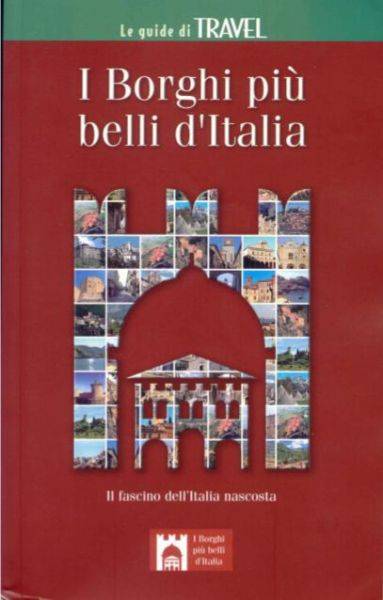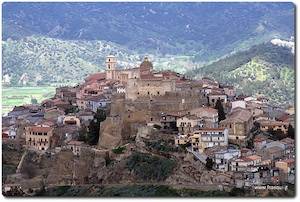I Borghi Più Belli d'Italia. A New, Refreshing Pace to Italian Tourism
@font-face {
font-family: "Cambria";
}@font-face {
font-family: "DejaVu Sans";
}p.MsoNormal, li.MsoNormal, div.MsoNormal { margin: 0cm 0cm 0.0001pt; font-size: 12pt; font-family: "Times New Roman"; }p.Default, li.Default, div.Default { margin: 0cm 0cm 0.0001pt; font-size: 12pt; font-family: "Times New Roman"; }div.Section1 { page: Section1; }
Florence, Rome, Tuscany, Milan, Capri… The list of famous Italian tourist destinations could go on forever. There is however another side to Italy that is virtually unknown outside and often even inside the country. The Italian peninsula is dotted with countless charming small villages; settlements dating back centuries that even today are bathed in an unscathed aura of history and charm. The problem was that the glimmer of these little jewels used to be eclipsed by the big names of the tourism industry. Furthermore, given their small size, it was practically impossible for these historic villages to make themselves appealing to oversea visitors: while it is a highly charming location, it was unlikely that tourists visiting Milan heard of places like the village of Tremezzo, one of the gems of Lake Como. And even if by some coincidence they did, there were more barriers to overcome. The lack of a proper tourism infrastructure left the visitors to organize the trip by themselves and, given that there were other maybe even less interesting but more easily accessible and more advertised locations available (after all, it is Italy…), places like Tremezzo risked remaining in the shadow forever.
I used the past tense because since the beginning of the millennium something has changed, thanks to the association I Borghi più belli d’Italia (The most beautiful villages of Italy) which was the protagonist of the event held at the Dopo Teatro Restaurant on December 2, 2010.
In the informal and convivial atmosphere of the trattoria, Enit (the Italian Government Tourist Board) President Riccardo Strano opened the event with encouraging data about tourism in Italy: the Boot is now on top of the wish list of countries Americans want to visit.
Present at the event were also Roberto Rocca, Director General of the Italian Minister of Tourism; Marco Bruschini, Head of the central Roman office of ENIT of the worldwide development of the Board; and Armando Perez, councilor of the Minister of Tourism. According to Director Strano: “these three men are responsible for all [the tourism in Italy]”. This should be enough to give an idea of how crucial the I Borghi più belli d’Italia is deemed to be for Italian tourism.
Furthermore, in representation of the association, at the event were present Umberto Forte and Mayor Livio Scattolini respectively Director and Vice President of I Borghi più belli d’Italia. Scattolini underlined that “we were born ten years ago, and now 200 beautiful villages are members of our association. They are part of the hidden Italy and are places that preserve the history, tradition and culture of Italian people. Thanks to the association they can promote themselves all over the world.” Director Forte stressed that while there are already 200 members, “more than 300 villages are waiting to be taken into consideration to be part of the association”.
The organization doesn’t simply promote the villages abroad. They have set up a travel agency, I Borghi Travel, that efficiently organizes tours comprehensive of food and accommodation, so that tourists can simply lay back and enjoy the trip without having to worry about anything.
After the conference, dinner was served but Roberto Rocca and Umberto Forte were kind enough to take the time to answer our questions.
Mr. Rocca underlined how long it has been since the last time a workshop like that had been organized in the United States, and how important it is that this kind of events focus, rather than on Italian tourism in general or the more common Italian destinations, on a more specific product, such as the Borghi association. This organization represents “that marvelous, hidden Italy that often isn’t known abroad as well as in Italy itself.”
According to Rocca, however, this kind of product can be offered only in countries that already know Italy very well, such as the States, as it would not be understood and considered in emerging markets such as China or South Africa.
We asked Director Forte if they encountered difficulties or resistance at the beginning of their endeavor, ten years ago. “What is incredible is that since the very beginning we had the feeling that the mayors of these comuni [townships] felt the need of being architects of their own development, a role that always eluded them, and being part of this association actually allows them to do so.”
We then asked about the requirements to be allowed “in the club”. Of course there are many, the most important being size (overall population of maximum 15,000 and village population of maximum 2,000), and the quality of the historical part of town and the need to have residents: no ghost towns allowed. One of the main goals of the association is indeed to avoid emigration from these small centers.
At the moment the association is well known in Europe, Russia and Japan, but thanks to ENIT it is growing daily, and Forte supplied data to back this statement up: “A recent survey by ISTAT and L’Aquila University shows that in 2008 people slept for a total of 8 million nights in our villages, and spent 10 billion euros”.






































i-Italy
Facebook
Google+
This work may not be reproduced, in whole or in part, without prior written permission.
Questo lavoro non può essere riprodotto, in tutto o in parte, senza permesso scritto.